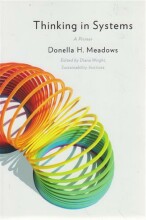Social change in and between organizations - Howard-Grenville (2015) Peer-driven occupational change
6 important questions on Social change in and between organizations - Howard-Grenville (2015) Peer-driven occupational change
Howard-Grenville (2015) did research on the change initiated by occupational members. What are these?
Elaborate on the model of Howard-Grenville (2015)
These different roles might cause tension on complexity, commitment or quality.
At the highest level of the model, the different frames are tried to either overcome by tightening the tension, or by sustaining verstile framing.
What is the key take away of the research of Howard-Grenville (2015)?
- Higher grades + faster learning
- Never study anything twice
- 100% sure, 100% understanding
What are the three frames discussed by Howard-Grenville (2015)?
- Nomalizing
This is about normal science. About aligning with the norms.
* Innovator role
* e.g. Promising people get high quality.
- Moralizing
Ethical imperative; social benefits,
* Educator / communicator role
This is often used as guidance to do something about the current situation
*E.g. Think how to protect life with green chemistry.
- Programatizing
Use green chemistry to deal with other concerns, such as budget, regulations, classroom limits etc.
You use it when it supports other goals.
* Problem solver role
* e.g. Marking lab green could result in more students in the lab.
Different frames and corresponding roles cause tension regarding quality, complexity and commitment, according to Howard-Grenville (2015). Elaborate on this
The tension is between the normalizing and pragmatizing frame.
The tension is about you do something regarding a norm, but the intention is not the same.
Tension in complexity;
This tension is between normalizing and moralizing.
The tension is about you want to contribute to green chemistry, but you are not capable of doing it all, so there are certain boundaries.
Tension in commitment;
This tension is between moralizing and pragmatizing.
The tension is about always being as green as possible and only being green when it supports your goal.
Howard-Grenville (2015) explains two different ways of dealing with different frames and roles: tightening to reduce tension and sustaining versatile framing. What's the difference?
With sustaining versatile framing is meant that you let the multiple roles and frames co-exist.
The question on the page originate from the summary of the following study material:
- A unique study and practice tool
- Never study anything twice again
- Get the grades you hope for
- 100% sure, 100% understanding
































